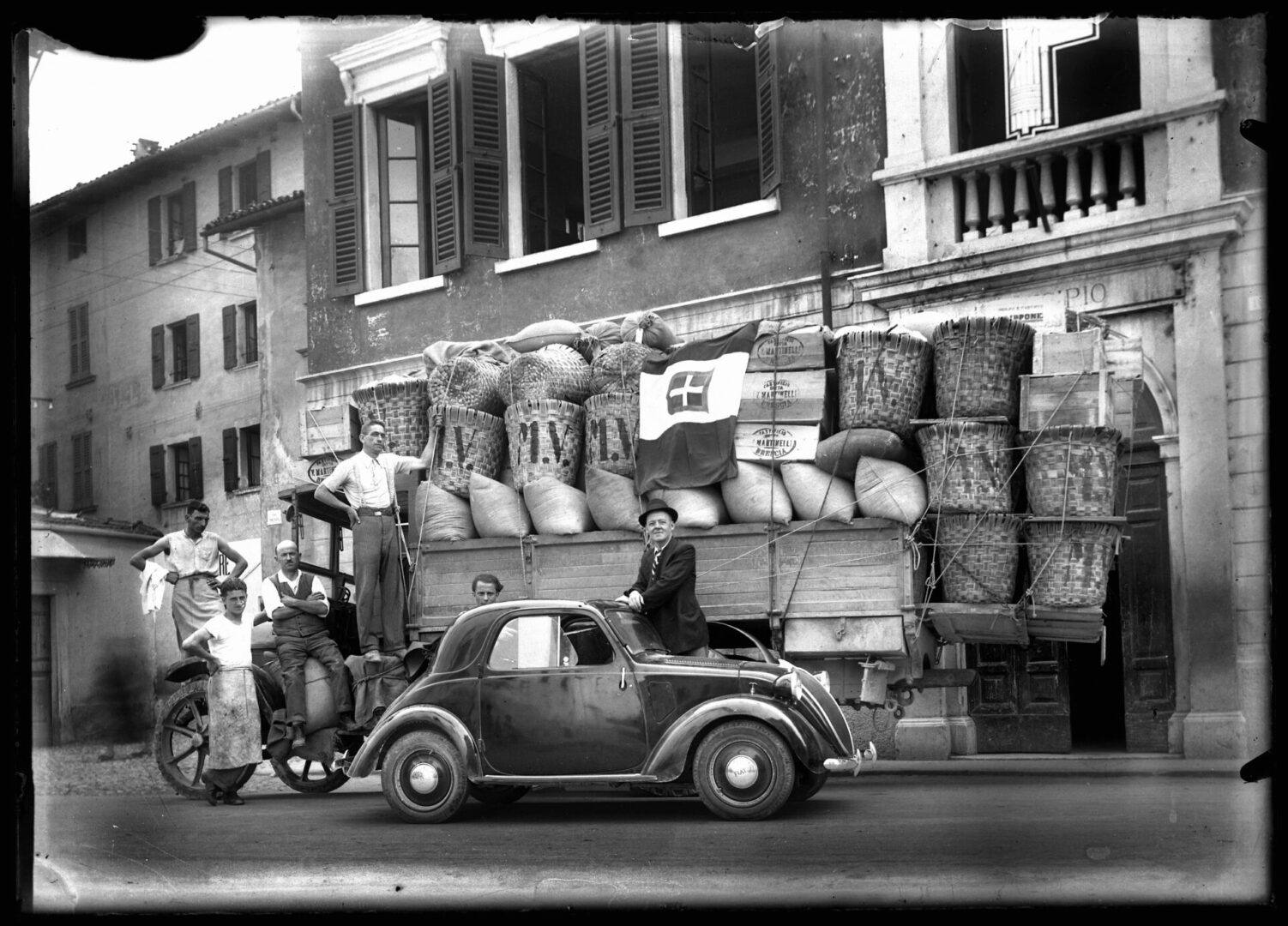Percorsi. Photography on the lake
From 13 April 2024 to 30 September 2024

The exhibition
Curated by: Renato Corsini
From 13 April to 30 September 2024, , as part of Testimoni, the 7th edition of the Brescia Photo Festival,, the Municipality of Marone, in collaboration with Proloco and Ma.Co.F Centro della Fotografia Italiana, presents the initiative PERCORSI – La fotografia sul lago (Paths – Photography on the Lake), with the aim of paying homage to those Italian photographers who have been protagonists of stories, social documentation and creative research. This is a diffuse, outdoor exhibition in the streets of the municipality of Marone, entirely dedicated to the work of photographer Antonio Lorenzo Predali.
At a time when there were few towns that could afford the existence of a photographic studio within them, the documentary and historical value of Predali’s work became the patrimony of an entire community and a motive for study and in-depth study not only for photography enthusiasts.
The exhibition is also an anticipation of what the Municipality of Marone intends to realise to pay homage to its fellow citizen: the building of the HISTORICAL PHOTOGRAPHIC ARCHIVE PREDALI, a museum entirely dedicated to photography, which the municipal administration, in the figure of the mayor Alessio Rinaldi, is realising inside the former Cittadini factory located on the shores of the lake.
It will be a cultural container that intends, first and foremost, to offer residents and tourists great photography, with exhibitions by established authors and thematic research to be developed in the area.
The Artist
A native of Marone, active as a photographer from the early 1900s, a careful interpreter of Sebino society, traditions and culture up to the 1950s, Predali boasts an archive of about 15,000 images, mainly taken on Lake Iseo, which his heirs wished to donate to the Municipality of Marone.
“A ‘witness’ to the evolution of a society that went through the drama of war, the author demonstrates that he knows how to interpret the most significant moments in the spheres of work, leisure time, ceremonies and building transformation with lucid precision.



